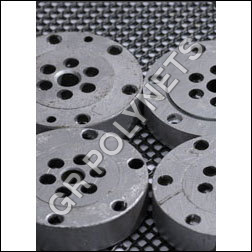
Industrial Sepration Mesh
Product Details:
- Use Sieving, Grading, Filtering, Protection
- Sail Finishing Galvanized / Polished
- Shade Rate Varies with mesh size
- Usage Industrial, Commercial
- Color Metallic Silver
- Material Stainless Steel
- Application Industrial Filtration, Particle Separation, Screening
- Click to View more
Industrial Sepration Mesh Price And Quantity
- 500.00 - 1000.00 INR/Piece
- 100 Piece
Industrial Sepration Mesh Product Specifications
- Industrial Filtration, Particle Separation, Screening
- Stainless Steel
- As per requirement (customizable)
- Industrial Separation Mesh
- Sieving, Grading, Filtering, Protection
- Varies with mesh size
- Industrial, Commercial
- Galvanized / Polished
- Metallic Silver
Industrial Sepration Mesh Trade Information
- 100 Piece Per Week
- 1 Week
Product Description
Industrial Sepration Mesh
Reusable "ISOPAC" plastic netting can be used as a separating layer between finished parts. The structure of mesh netting provides a breathable, open air environment so air and fluids can flow freely to resist rust and corrosion. On the other end cardboard or other solid materials can collect fluids and restrict air flow.
"ISOPAC" extruded plastic netting can be used in bin liners, and pallet liners or as parts separators to protect from chipping, scratching and abrasion as the netting are reusable they are ultimately more economical than competitive liners. It all adds up to improved parts quality at a lower cost.
"Isopac" Protective Mesh
| Product Code | Width | Colour | Roll Length |
|
|
|
| 25 Meters per Roll |
Versatile Mesh Solutions for Industrial Needs
Our Industrial Separation Mesh is designed for a broad spectrum of usesranging from industrial filtration to protection. Suitable for sieving, grading, and screening, each mesh is tailored to your projects demands. Crafted in stainless steel with customizable lengths, our mesh solutions meet diverse operational challenges across multiple industries. Its robust construction ensures long-lasting performance in rigorous environments.
Premium Materials and Finishing
We utilize high-grade stainless steel to fabricate our meshes, ensuring superior strength and resistance to corrosion. Clients can select from galvanized or polished finishes based on their specific operational requirements. The meshs metallic silver appearance and customizable shade rates are perfect for both functional and aesthetic objectives. Our products adhere to the highest quality standards for industrial and commercial applications.
FAQs of Industrial Sepration Mesh:
Q: How is Industrial Separation Mesh used in filtration and particle separation?
A: Industrial Separation Mesh functions as a physical barrier that filters, sieves, and separates particles of varying sizes. Its stainless steel construction enables efficient removal of solids from liquids or gases, ensuring desired purity in industrial processes.Q: What materials are available for Industrial Separation Mesh, and how does this affect its performance?
A: Our mesh is primarily manufactured using stainless steel, renowned for its strength and resistance to corrosion. This makes the mesh highly durable and ideal for both industrial and commercial settings, especially where long-term reliability is crucial.Q: When should I choose a galvanized finish versus a polished finish for my mesh?
A: A galvanized finish offers enhanced corrosion resistance, making it suitable for harsh environments or outdoor applications. Polished finishes, on the other hand, are often selected for cleaner, more aesthetic settings or where smoother surfaces are needed for the process.Q: Where can Industrial Separation Mesh be applied beyond basic sieving?
A: Besides sieving, our mesh is invaluable for grading, industrial screening, filtration, and as a protective barrier in machinery or workspacescatering to sectors like food processing, pharmaceuticals, construction, and mining.Q: What is the process for customizing mesh length and shade rate?
A: Clients can specify desired length and mesh size, allowing us to tailor the product for exact filtration or separation requirements. The shade rate varies with mesh size, affecting how much light, air, or particles pass through, which we adjust based on your application needs.Q: How does using Industrial Separation Mesh benefit my operations?
A: Utilizing our mesh increases process efficiency, ensures consistent particle separation, and extends the lifespan of equipment by preventing blockages or contamination. Its robustness and customizability also reduce replacement costs.
Price:
- 50
- 100
- 200
- 250
- 500
- 1000+







 Send Inquiry
Send Inquiry Send SMS
Send SMS